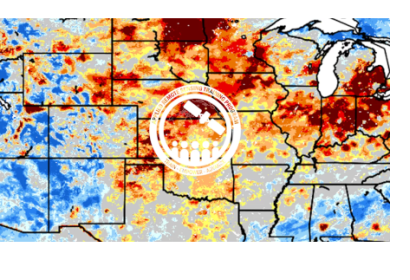
This training is focused on the introduction of the NASA Land Information System (LIS) output of soil moisture at various depths for drought analysis and monitoring. As a result of the NASA Short-term Prediction Research and Transition Center (SPoRT) program and its research-to-operations (R2O) work, this training will demonstrate how LIS output of soil moisture from a land surface model (LSM) can be included in traditional drought monitoring applications.
Additionally, near real-time forcing of the LSM by the Multi-Radar Multi-Sensor (MRMS) precipitation and the Global Data Assimilation System (GDAS) sensible weather data provide near real-time, observation-driven products with ~2–8 hours latency. Each of these enables a more accurate depiction of vegetation and soil moisture impacts related to both long-term and short-term drought events, including rapid-onset flash drought events.
This training will improve the user’s understanding of how soil moisture is modeled within LIS in order to improve the interpretation and application of this output for drought monitoring. Conducted by experts in LIS and operational drought monitoring, the overall course will enable users to interpret SPoRT-LIS soil moisture percentile products for drought applications. Examples from operational applications as well as practice exercises (for using LIS data for drought monitoring) will be included in this course. Access to the SPoRT-LIS products via online viewer, in GIS formats, and GIS-based display tools, will also be included. Moreover, self-paced microlessons will be available to help users confirm their understanding and improve their skills via homework lessons between live sessions.
To have a closer loof at the three sessions included in the online workshop, click here.
At the end of the worksop, participants will be able to apply LIS output to efficiently analyze drought over large spatial areas in conjunction with current practices and to integrate this capability with existing data. The main objectives of the training are:
- To identify the NASA/LIS basics regarding the framework, input forcing, static fields, LSM structure, and output most relevant to drought
- To summarize the derived soil moisture percentile products and how these are created
- To apply SPoRT-LIS output and/or derived products to both complement existing data and overcome limitations to monitoring drought over large areas
- To recognize ‘best practices’ for LIS impact related to drought
- To configure LIS output file for viewing within a GIS-based display tool and for tailored output products and graphics
For more information on the workshop and registration, click here.
This training series is intended for local, state, regional, federal, and international governmental and non-governmental organizations interested in using NASA data for drought monitoring and forecasting. Appropriate for operational end-users, decision-makers, and researchers with interests/needs in assessing drought, water resources, agriculture, and wildland fire management.
